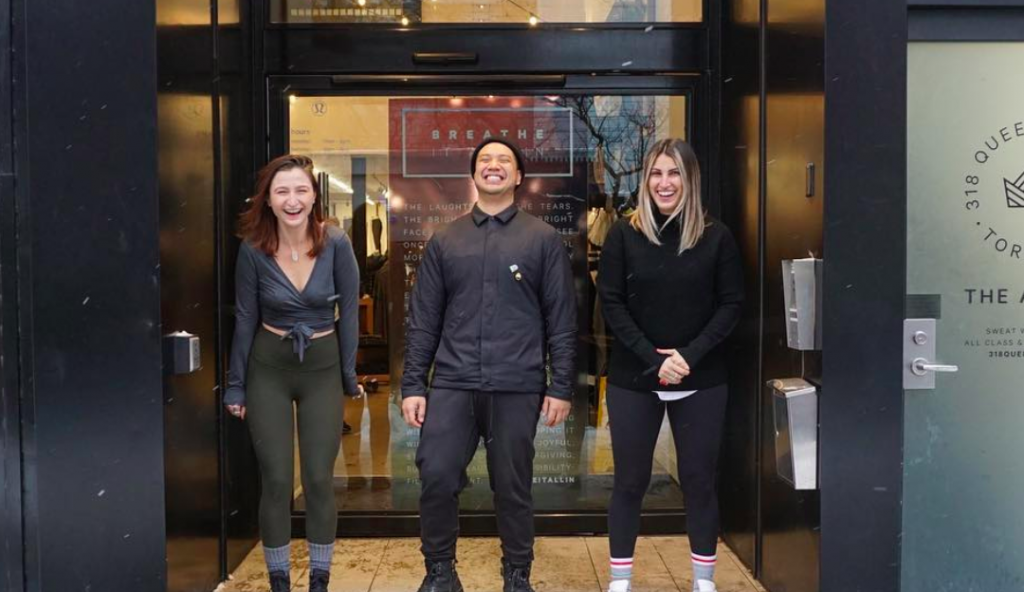While hiking its guidance for the fourth quarter, Lululemon officials at the ICR Conference Monday laid out some core catalysts expected to drive its North America segment in the years ahead.
At the conference in Orlando, FL, Celeste Burgoyne, EVP, Retail, Americas, remarked that with the region recently hitting 325 locations, she’s enthused to see there’s “still see so much growth potential” in the North American market. She remembers arguing when she joined Lululemon 11 years ago “that this could potentially be 350 stores. So it’s really fun to see what innovation has done and now that we’re at a healthy store base and a great digital base, we see a positive future.”
Burgoyne mentioned a few changes in recent years that promises to drive top-line growth.
First, she noted that just three years ago, Lululemon was relying on one format – a 3,000 square foot box – and it now has four. One newer one is its Co-Located format, which measures between 5,000 to 6,000 square feet and has been particularly beneficial in helping the chain showcase a fuller offering of men’s merchandise. Twelve Co-Located stores were opened this past year.
As second is a Local store that measures between 1,00 to 2,000 square feet and has helped Lululemon “densify in places where we didn’t think we could go.” These smaller stores have opened in areas such as downtown Detroit; downtown Houston; Bend, OR; and Fort Collins, CO. Said Burgoyne, “We’re seeing really great community experiences created at these stores as well as revenue that is above expectations.”
The third format is seasonal stores, with 22 opened from November through January this past holiday season. These likewise help Lululemon reach markets that are new to the brand and help reach new customers. Half of the customers visiting the seasonal stores are estimated to be new to Lululemon.
A second overall growth driver in North America is digital, where investments continue to pay off. Mobile traffic has improved 60 percent and comp conversion on mobile has increased 30 percent since its website was relaunched at the end of October. A focus on content, including around product and education, has also been a focus. Personalization will be a major focus for digital in 2018.
Other sales drivers for North America is expected to be the continued rollout of its “endless aisle” technology that enables stores associates with handhelds to check inventory without leaving the customer’s side. Buy-online, in-store pick is scheduled to roll out in the second half of 2018.
Finally, community events are receiving a higher priority. In June, Lululemon sponsored its first 10K as title sponsor of the Toronto Waterfront 10K, marking its first race sponsorship outside of the SeaWheeze Half Marathon in its hometown of Vancouver. In October, Lululemon partnered with Strava to sponsor the Ghost Race, a virtual five-mile race that took place across 15 cities and attracted 15,000 runners. This past summer, Lululemon teamed up with SoulCycle to launch Below the Barn, a 2,200 square-foot store with many experiential features in the Hamptons.
Currently, Lululemon again partnering with Strava for the Lululemon 40 | 80 Challenge, which encourages runners to hit either 40K or 80K over the span of two weeks. Burgoyne said the events not only leverage local communities but help build customer relationships with its many local ambassadors.
Also at the conference, Laurent Potdevin, discussed Lululemon’s objective to reach $4 billion in sales by 2020. Sales are set to hit nearly $2.6 billion in 2017. He noted that this is the third ICR conference he has attended since becoming CEO and the chain has made significant investments in its infrastructure, supply chain technologies and other areas and undergone a number of internal restructurings to position them for that growth goal. This includes an inventory balancing the company faced in 2015, gross margin recovery in 2016 and the digital acceleration Lululemon saw this past year.
Digital is expected to represent 25 percent of sales by 2020 and the company sees e-commerce “easily exceeding more than 30 percent ultimately” as investments continue to be made. Improvements in collaboration among teams, online assortment enhancements and improved photography helped drive double-digit increases in online traffic and conversion in the third quarter and that has continued in the fourth quarter.
International, also expected to represent 25 percent of sales by 2020, is particularly benefiting from sales doubling Asia in the third quarter. Said the CEO, “We’re being pulled into markets now in China and other parts of Asia.” Europe is growing at a slower rate at a 40-percent clip in the third quarter, but Potdevin remains “pleased with how’s that’s tracking.”
In anticipation of the conference, Lululemon raised its guidance. It now expects net revenue to be in the range of $905 million to $915 million based on a total comp increase in the high single digits on a constant dollar basis. This compares to its previous guidance of revenue in the range of $870 million to $885 million based on a total comp increase in the mid-single digits on a constant dollar basis.
Reported EPS is expected to range between $1.24 to $1.26 for the quarter. Excluding the impact of the restructuring of its ivivva operations, adjusted EPS is expected to be in the range of $1.25 to $1.27. The previous guidance EPS in the range of $1.18 to $1.21, or $1.19 to $1.22 excluding the impact of the ivivva restructuring.
At the conference, Potdevin said Q4 sales results reflect “very strong e-commerce results as well as store results,” and the company remains “pleased to see the momentum in our business continuing now through the fourth quarter.”
Photo courtesy Lululemon
















